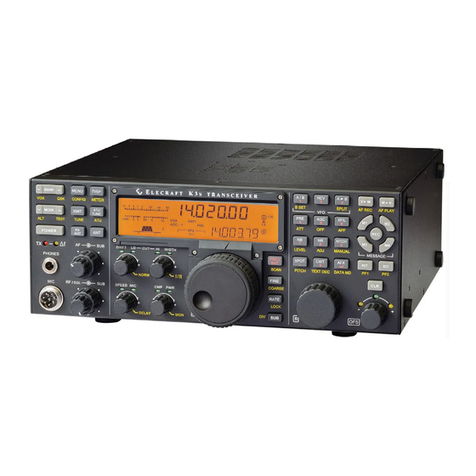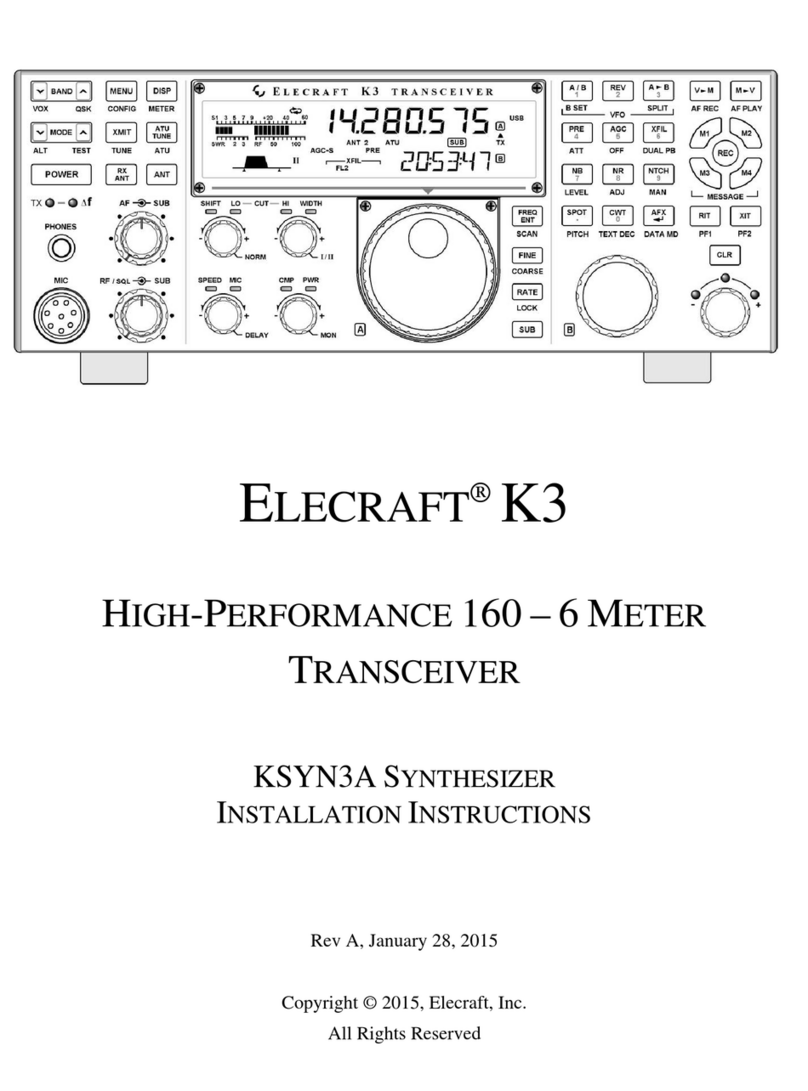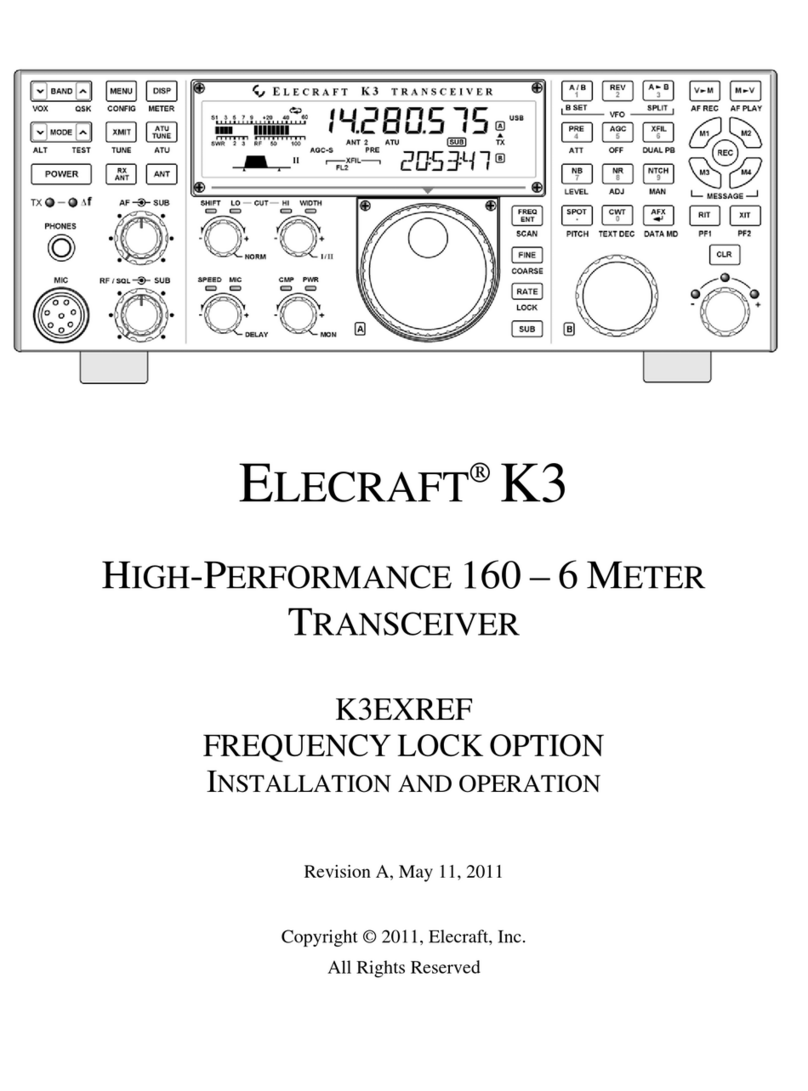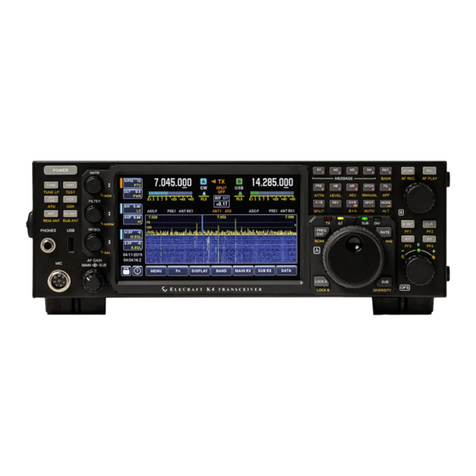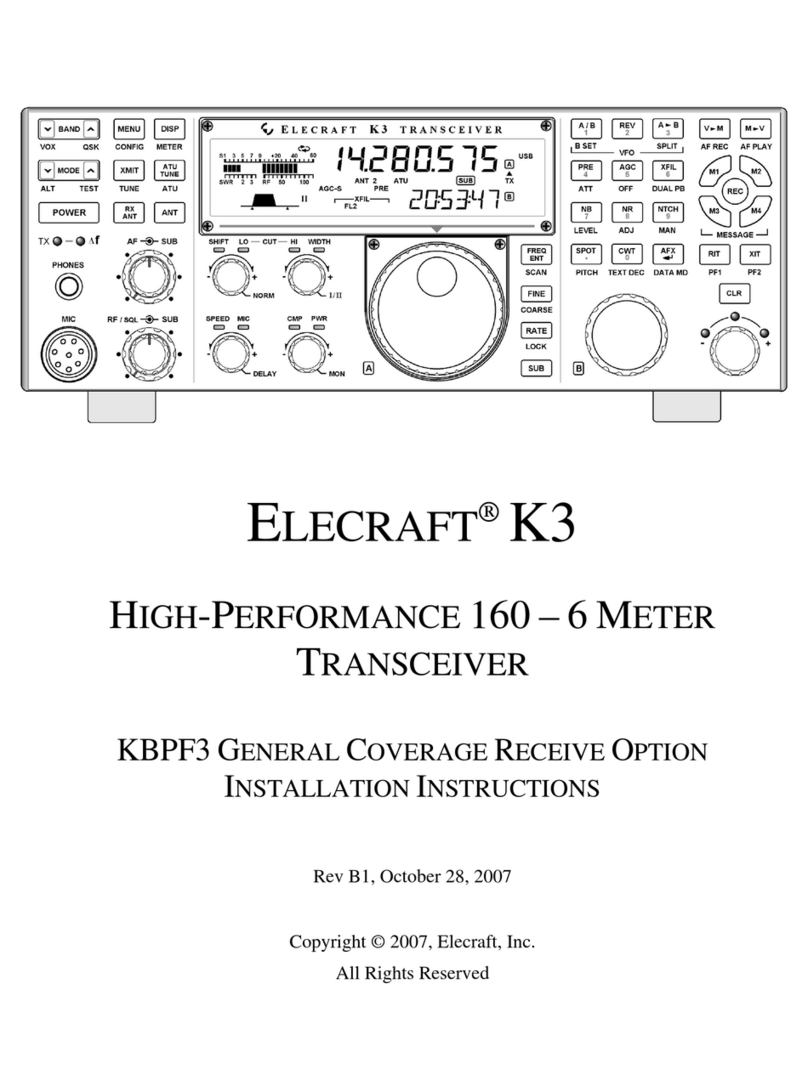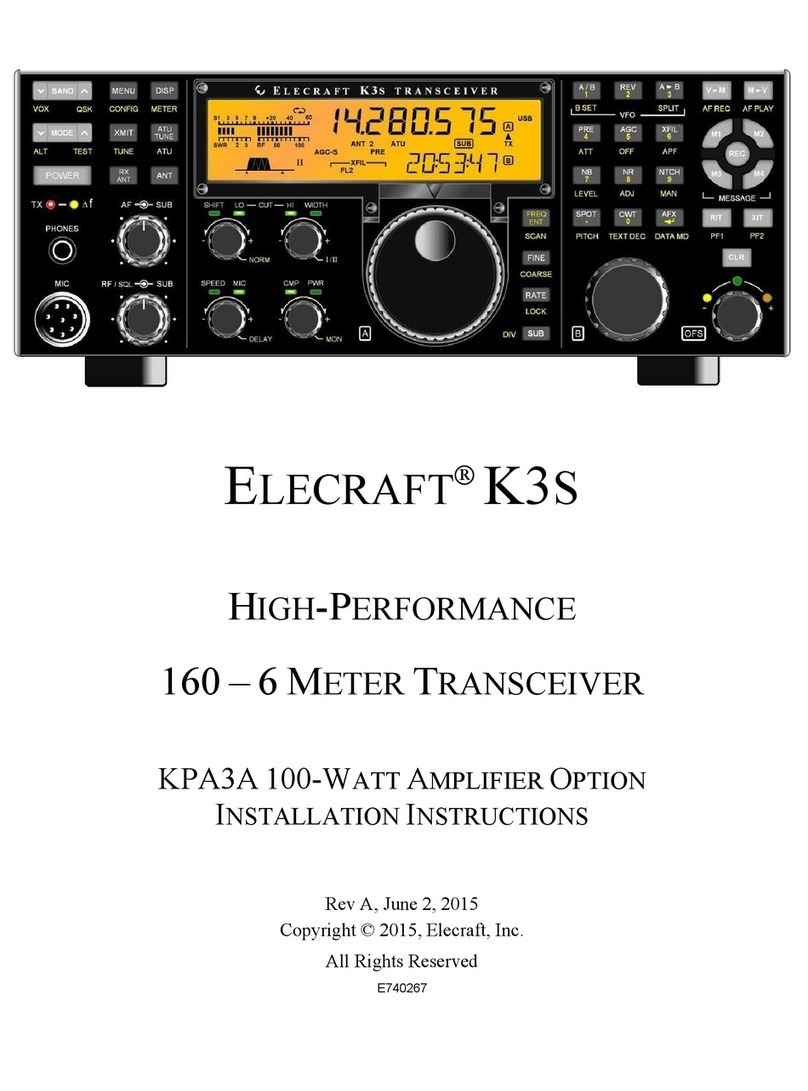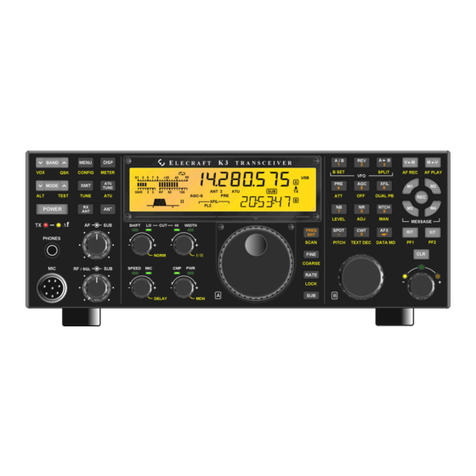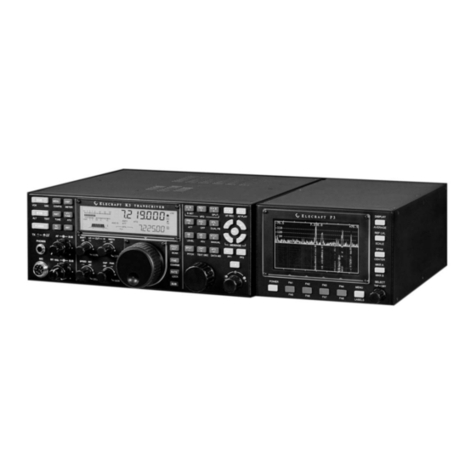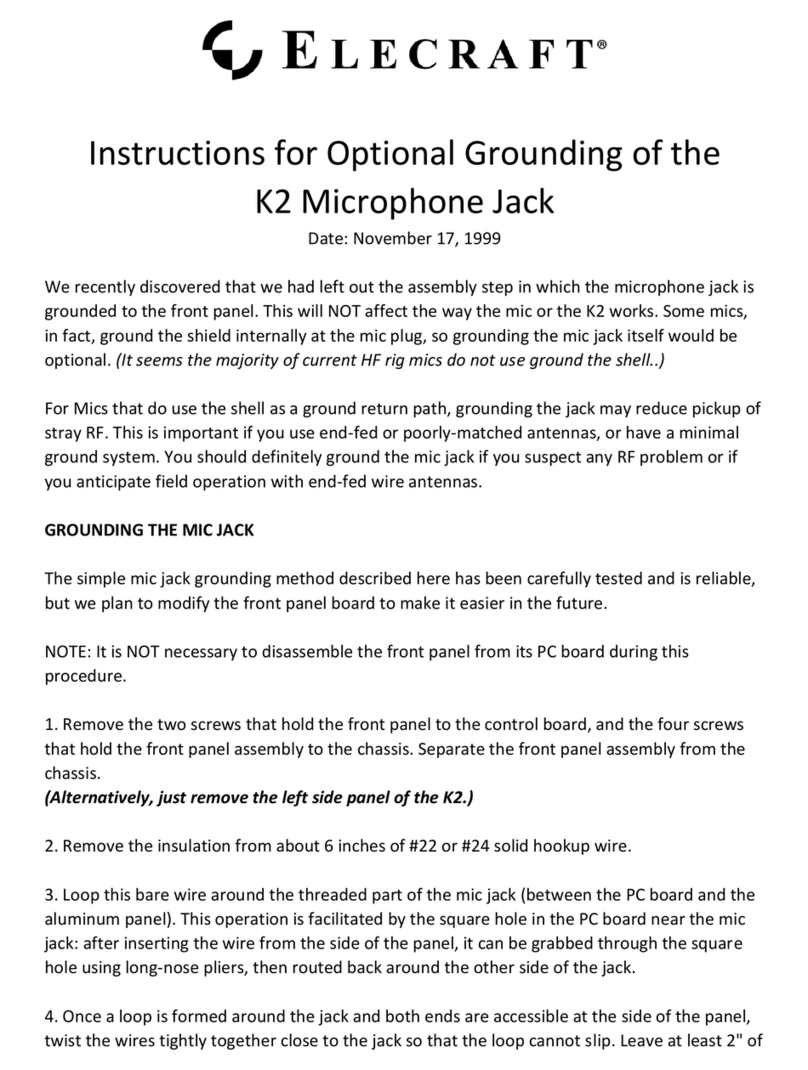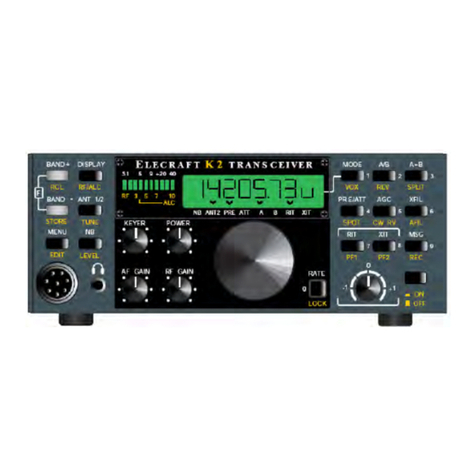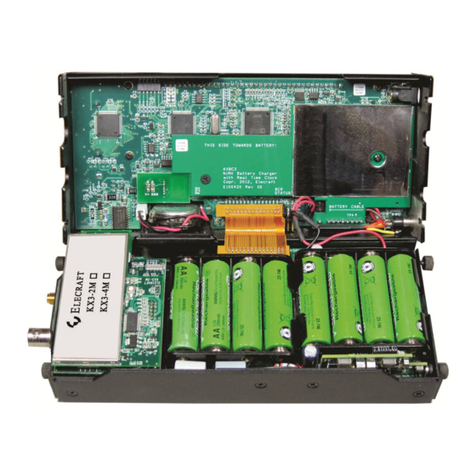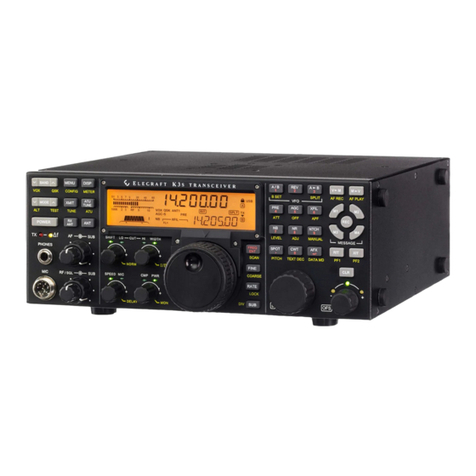Introduction
Appendix G describes assembly of the K2/100 transceiver's internal 100-
watt final output stage (KPA100 board). The PC board includes two
conservatively-rated RF power transistors, low-pass filters, SWR bridge,
monitoring circuits, speaker, and an RS-232 interface. Filter switching, T-
R sequencing, and other configuration is handled by the K2/100's main
microcontroller.
KPA100 assembly and installation should be done only after the
transceiver has been aligned and tested at the 10-watt level.
Upgrades Recommended for Older K2s
All K2 owners are encouraged to keep their transceivers up to date by
making recommended changes. These changes should be installed and
tested before the KPA100 is installed.
K2 s/n 4059 or lower: K2 keying bandwidth modification (order
#K2KEYMODKT). This modification is strongly recommended for CW
operators, especially if you use high power. Note: Requires upgrade to
revision 2.04 or later K2 firmware (order #FWK2MCIO).
K2 s/n 3445 or lower: PLL Upgrade (order #E850138). This ensures
excellent VFO temperature stability during high-power operation.
K2 s/n 2999 or lower: (1) 10 meter band-pass filter and VFO ALC
modification (#E850093, supplied with your KPA100 kit). (2) BFO
modification (order #BFOMDKT). You should also make all applicable
changes described in this document:
http://www.elecraft.com/manual/k2a2binstr.pdf
Pre-Wound Toroids Available
The toroids used in the KPA100 are not difficult to wind, and full
instructions are provided. If you prefer not to wind them yourself, you
can obtain a full set of pre-wound toroids from an Elecraft-qualified
source. Ordering information can be found on our web site,
www.elecraft.com. You do not need to send your cores or wire to the
winding service.
Preparation for Assembly
With all equipment that operates at high power levels, proper assembly
and alignment are critical for safe and reliable operation. Follow the
instructions carefully and make all of the recommended measurements.
Do not substitute components or perform any assembly steps out of order.
Please read the following information regarding tools before
proceeding.
Tools Required
The following tools are required to build this kit:
Flush-cutters (Hakko CHP-170, Xcelite 170, etc.). Ordinary
diagonal cutters are not suitable for flush-cutting (trimming leads
very close to the board).
Temperature-controlled soldering station with a fine-point, 700
to 800-degree (F) tip. Do not use a high-wattage iron or gun with
small components, since this can damage pads, traces, or the parts
themselves.
Larger iron or soldering gun. This will be used only for installation
of power transistors, output transformer, and DC power wiring. A
low-wattage iron cannot be used for these steps.
Digital Multimeter (DMM). A DMM with diode-checking
capability. Capacitance measurement capability is desirable, though
not required.
